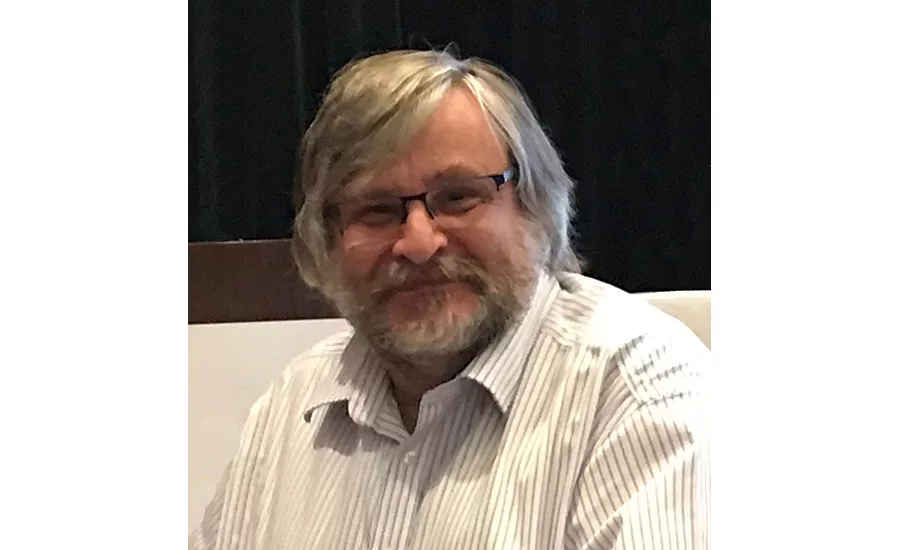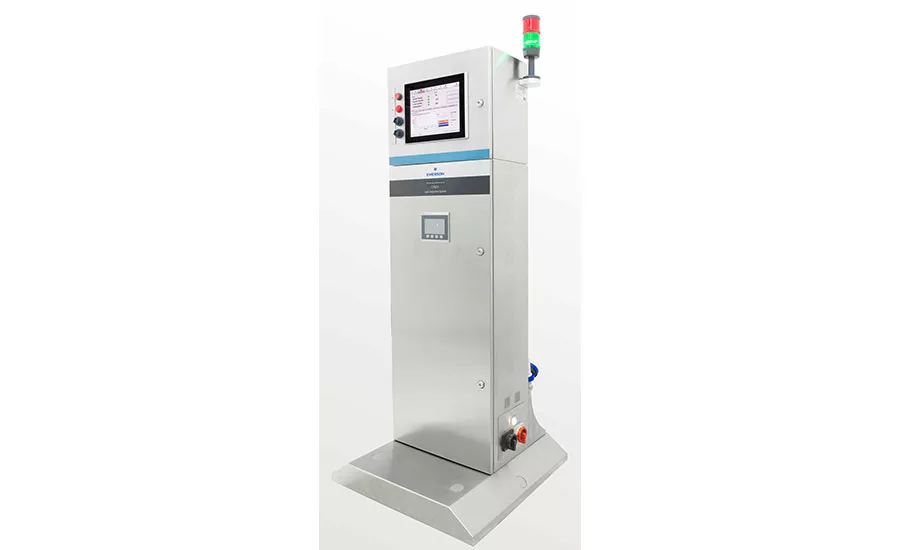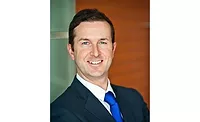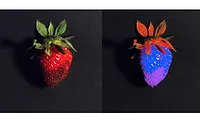Engineering R&D
Detect package and container leaks with QCL technology
This leak detector can -- and does -- detect package and container leaks at rates up to 200 units per minute on a line

Peter Watmough, Emerson global leak detection product manager

Emerson’s Rosemount CT4215 Packaging Leak Detection System makes use of sophisticated technology used in oil and gas applications, adapted to detect leaks in food and beverage MAP, can and bottle applications at line speeds.
Photo courtesy of Emerson
Emerson’s engineers have created a sensing device capable of detecting gas leaks in bottles, cans and modified atmosphere packaging (MAP) at line speeds, using laser technology developed by Cascade Technologies, a Stirling, Scotland-based spinoff of the University of Strathclyde.
When Emerson acquired Cascade and its Quantum Cascade laser-based (QCL) gas analyzers and gas emission monitoring systems in 2014, Emerson found lots of applications for them in oil and gas, automotive testing, chemical processing and continuous emissions monitoring. In fact, according to Peter Watmough, global leak detection product manager, Emerson has shipped many hundreds of units to various markets, using more than 4,500 QCLs.
Like other stories in the past, the food and beverage industry now has available to it technology that’s been in use in other industries, but that needed adaptation to work in our industry. And that’s where the innovation comes in. Emerson engineers needed to create specialized sensing heads for various food and beverage packaging styles and applications.
What came out of this work is a device, the Rosemount CT4215 Packaging Leak Detection System, that accommodates customizable heads for trays, pouches, bags, bottles and boxes, and can measure carbon dioxide and other gases used in MAP. In fact, Watmough says, the sensor can detect leaks from micro-cracks in vodka bottles. I asked Watmough to supply a few more details.
FE: In a nutshell, how does this technology work?
Peter Watmough: The system uses a chirped quantum cascade laser as part of its measurement system. QCL lasers can create a laser beam with a very narrow wavelength that’s selected to be absorbed by the gas being detected. Chirping, or pulsing, the laser very fast, at less than 10 nanoseconds, allows more than one laser to be used at effectively the same time, enabling multiple gases to be detected.
The test pack passes through a sample head that draws the air and any leaking gas into a sample cell. This is a sealed box with highly polished mirrors at either end that are designed to reflect the beam and increase the path length, greatly increasing the sensitivity. As the laser passes through the cell, some of the laser light is absorbed by the gas of interest. The amount absorbed is then related to a leak rate. If the leak rate is higher than specification, the pack is automatically rejected.
FE: I mentioned that you had some adaptation to do for food and beverage applications. Can you describe that in more detail?
Watmough: The patented, chirped QCL laser is at the heart of the system. This only changes when the gas being detected changes, and it requires no maintenance or other adaptation. The innovation is in designing sample heads that can be used with a widely diverse range of packaging.
For example, meat packs may need a soft, compliant roller material to gently squeeze the pack to force gas through any pinholes or weld gaps. Boxes of vodka need an arch to pass under to detect leaking alcohol, whereas whisky casks and motherbags of meat may utilize a wand system. The challenge set out by this diversity is exciting, as it allows even more innovation based on our core chirped QCL platform.
FE: For glass bottles with caps, is the system “sniffing” the seal of the cap? What about plastic bottles?
Watmough: In all our leak detection applications, we use a system that looks at the whole of a package to ensure we capture every single leak. For example, in bottles, this is via an arch that sits over the line that allows the containers to pass through one at a time.
FE: Bottles or cans can fly past the sensor, but with MAP containers, how do you detect a leak? What’s the smallest hole that can be detected?
Watmough: We can detect pinholes down to 0.2 millimeters. For each pack type, a custom head is developed. For pillow packs, such as those used for meat and cheese snacks, the pack passes under a compliant roller material before any gas that is emitted is detected. Innovation is required to tailor the sample head to the pack being tested.
FE: Some MAP applications use more than one gas. Can the machine check for more than one gas? How so?
Watmough: Because we use a patented, chirped QCL, we can pass multiple laser beams tuned to detect different gases at virtually the same time. The duration of each laser pulse is typically between 150 and 1,000 nanoseconds, so firing them sequentially allows detection of up to four gases at any one time. Incidentally, each laser chip is about the size of a grain of rice and is a class 1 laser, so it is very safe—just in case you had images of a James Bond villain taking over the world.
FE: You mentioned a vacuum pump draws air from around the container under test to the sensor. Is the ambient air clean enough not to interfere with the measurement?
Watmough: This depends on the manufacturing facility and the gas being detected. In cases where there’s a possibility of interference from ambient gases, we offer an enclosure that effectively isolates the sample head area from the manufacturing area. However, because the lasers are measuring continuously, low levels of contamination are well tolerated, since the measurement is a differential one. In effect, we measure the difference between the ambient air and the air and gas from a leaking pack. The system continuously self-monitors to ensure any external gases are at levels that won’t interfere with the measurement.
FE: When a defective product or package is found, what happens next?
Watmough: That’s up to the manufacturer. Our system will send a signal that can be integrated into an automatic rejection system or can stop the line. We can also set varying parameters to instigate a line stop if, for example, there are five or more sequential leaking packs. These parameters can be customized to meet the filler’s requirements.
FE: Could the system be set up in a line without a system integrator’s expertise?
Watmough: The systems are supplied fitted and working and require minimal installation. They require simply a supply of electricity and about 1.5 meters of line space.
FE: It’s probably difficult to determine ROI, as applications are so different, but grab samples could be very costly, right?
Watmough: It’s very hard to quantify, but manual inspection is expensive, ineffective and doesn’t detect 100 percent of leaking packs. Our batch statistics and alert systems allow systemic defects on a production line to be detected early, preventing costly scrap product and even more costly product recalls. We like to think of our systems, not as simple detectors, but a major part of a wider improvement process.
FE: Anything else?
Watmough: I think that we will continue to find new applications for our detection systems, not only in the food and beverage industries, but also in other fields where leak control is important. I would encourage companies to think of this not only as a way of inspecting defective packs, but also as an integral component of their continuous improvement process. I’m truly proud to be a part of that.
For more information, visit www.emerson.com
Looking for a reprint of this article?
From high-res PDFs to custom plaques, order your copy today!







